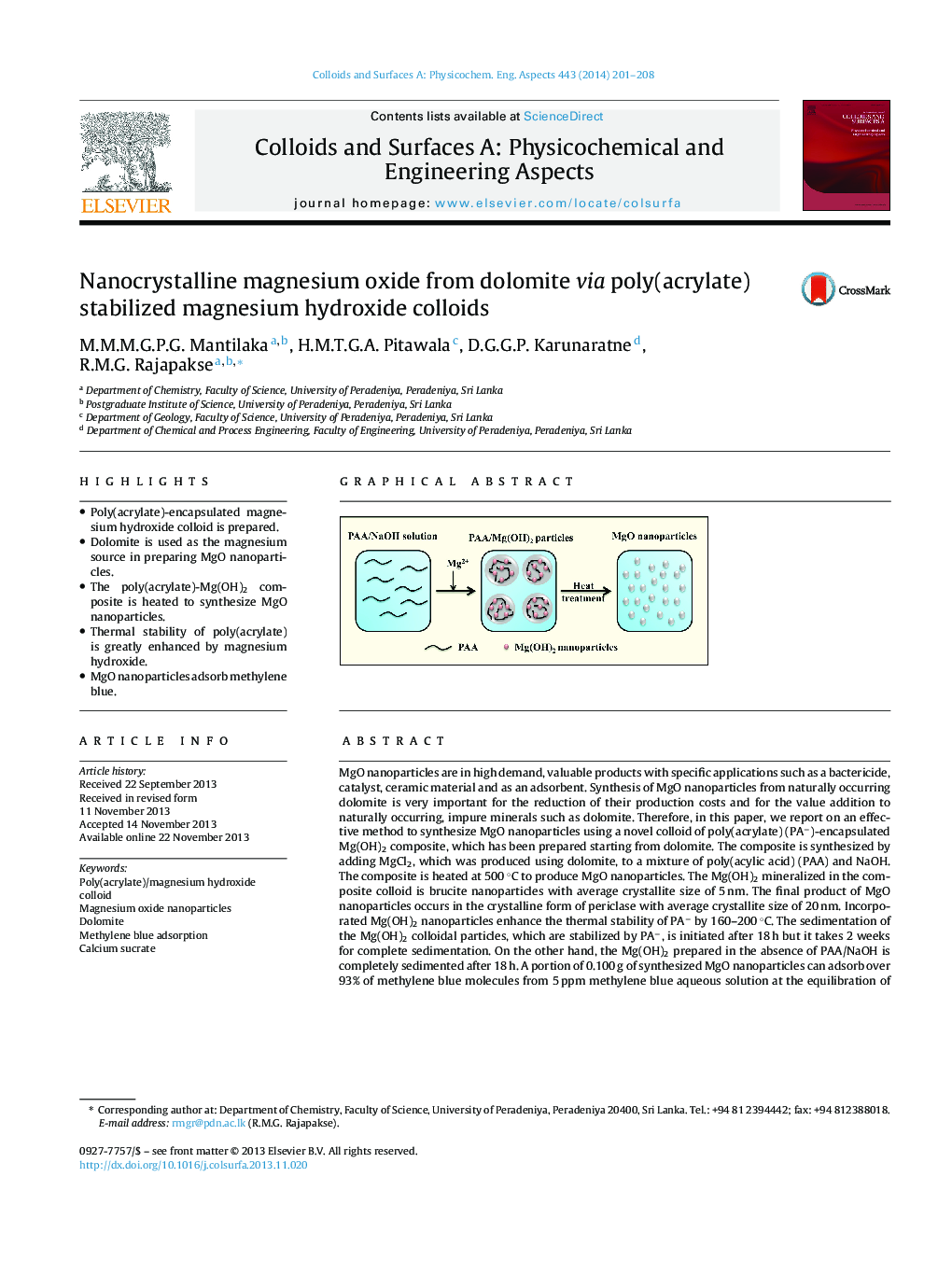| Article ID | Journal | Published Year | Pages | File Type |
|---|---|---|---|---|
| 592987 | Colloids and Surfaces A: Physicochemical and Engineering Aspects | 2014 | 8 Pages |
•Poly(acrylate)-encapsulated magnesium hydroxide colloid is prepared.•Dolomite is used as the magnesium source in preparing MgO nanoparticles.•The poly(acrylate)-Mg(OH)2 composite is heated to synthesize MgO nanoparticles.•Thermal stability of poly(acrylate) is greatly enhanced by magnesium hydroxide.•MgO nanoparticles adsorb methylene blue.
MgO nanoparticles are in high demand, valuable products with specific applications such as a bactericide, catalyst, ceramic material and as an adsorbent. Synthesis of MgO nanoparticles from naturally occurring dolomite is very important for the reduction of their production costs and for the value addition to naturally occurring, impure minerals such as dolomite. Therefore, in this paper, we report on an effective method to synthesize MgO nanoparticles using a novel colloid of poly(acrylate) (PA−)-encapsulated Mg(OH)2 composite, which has been prepared starting from dolomite. The composite is synthesized by adding MgCl2, which was produced using dolomite, to a mixture of poly(acylic acid) (PAA) and NaOH. The composite is heated at 500 °C to produce MgO nanoparticles. The Mg(OH)2 mineralized in the composite colloid is brucite nanoparticles with average crystallite size of 5 nm. The final product of MgO nanoparticles occurs in the crystalline form of periclase with average crystallite size of 20 nm. Incorporated Mg(OH)2 nanoparticles enhance the thermal stability of PA− by 160–200 °C. The sedimentation of the Mg(OH)2 colloidal particles, which are stabilized by PA−, is initiated after 18 h but it takes 2 weeks for complete sedimentation. On the other hand, the Mg(OH)2 prepared in the absence of PAA/NaOH is completely sedimented after 18 h. A portion of 0.100 g of synthesized MgO nanoparticles can adsorb over 93% of methylene blue molecules from 5 ppm methylene blue aqueous solution at the equilibration of the adsorption, whereas the adsoption of methylene blue by the same amount of 300 μm sized MgO particles is very much lower; 35% being the best value when 0.100 g is used. The proposed method is of great industrial value due to the potential applications of byproducts in addition to MgO nanoparticles themselves.
Graphical abstractFigure optionsDownload full-size imageDownload as PowerPoint slide
